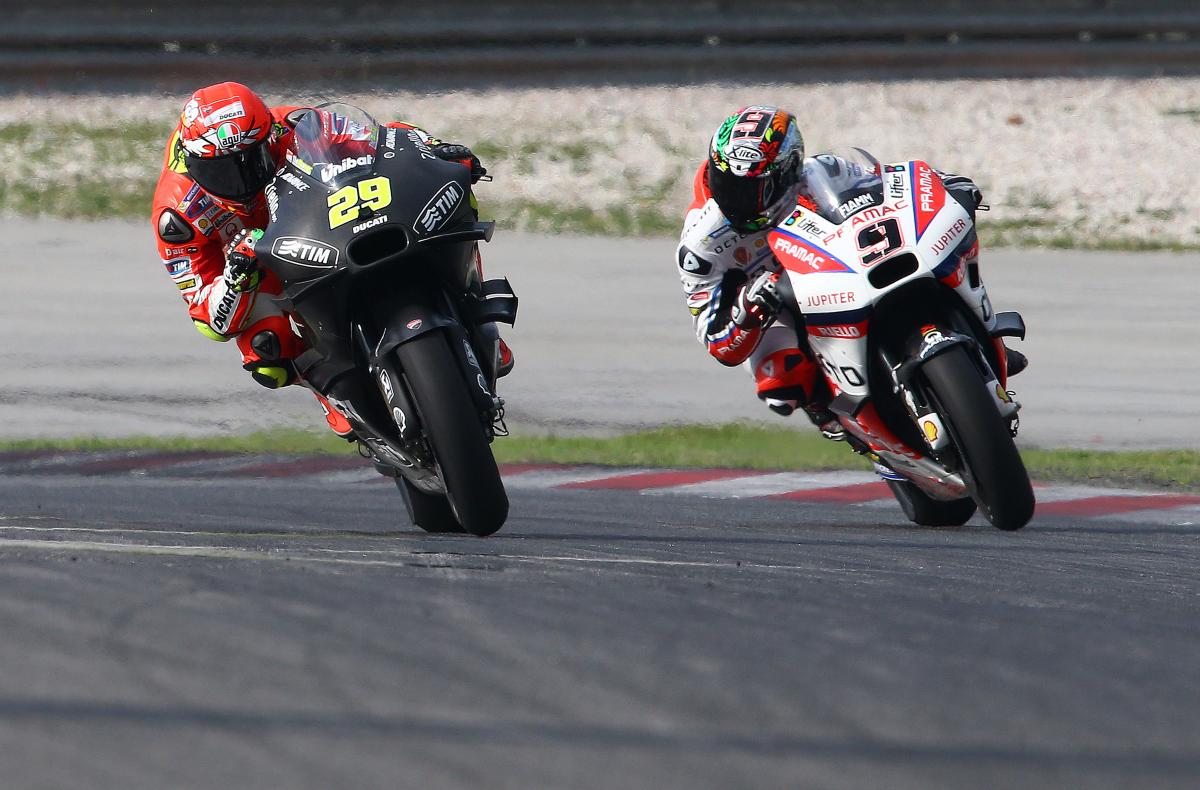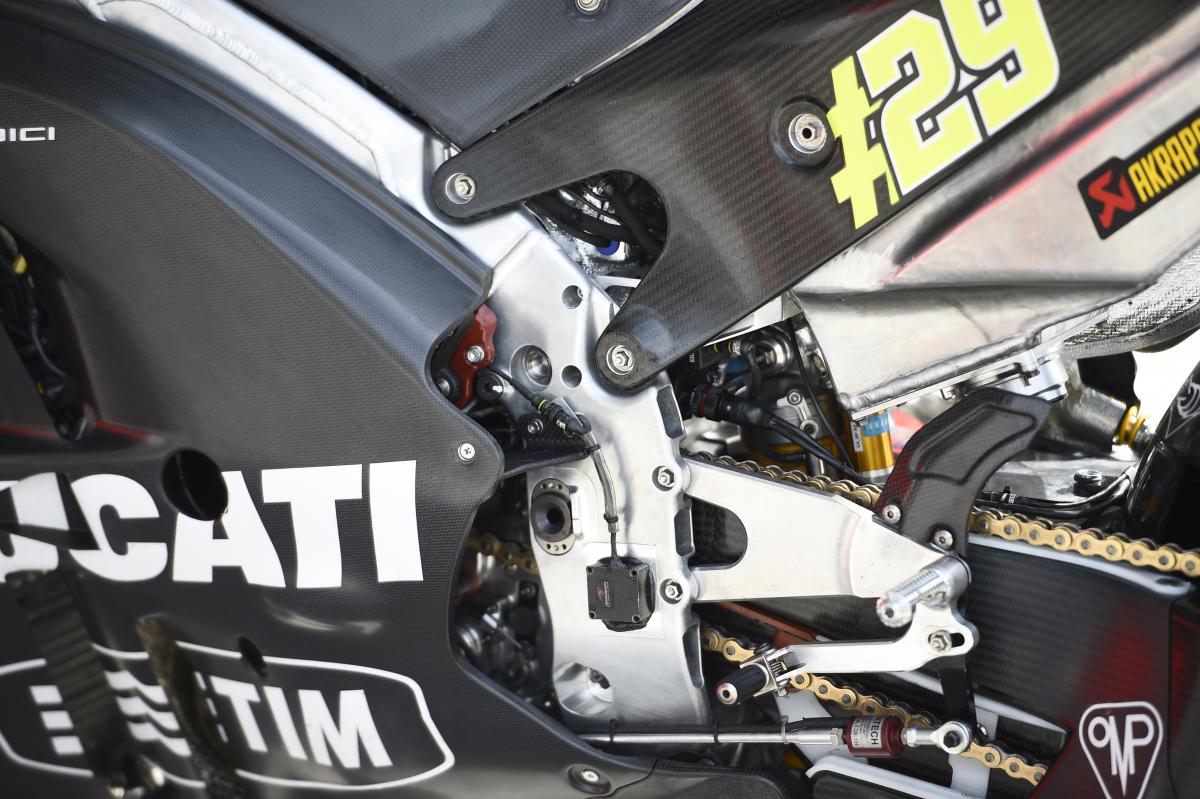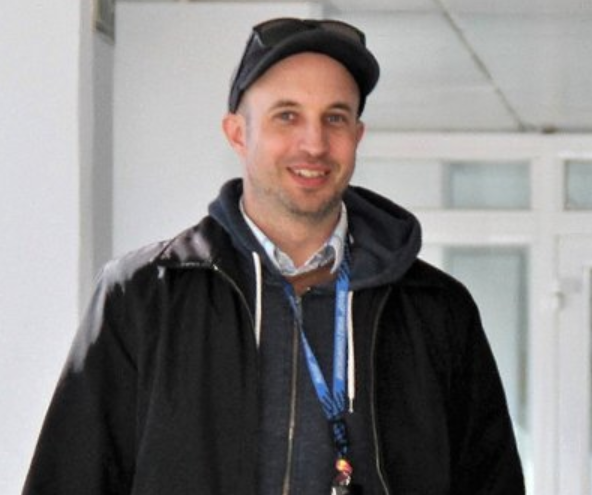Corrado Cecchinelli (MotoGP DoT) - Q&A: EXCLUSIVE

Crash.net:
What stage are you at with the unified software?
Corrado Cecchinelli:
We are continuously issuing new releases of the software, the hardware was already compulsory and has not changed from last season. A number of releases have been issued and delivered to the manufacturers and this process will continue forever because we will never get to a point where we will say development is over.
We will always try to put new things in the software. It will always evolve based on our own recommendations or based on the manufacturers' input. So at the moment we have a certain version, but we already know it will not be the one on which we start the championship. That will be a newer version for sure.
Crash.net:
What will change before the first race?
Corrado Cecchinelli:
In this moment we are in the phase that is improving the so-called 'failsafe functions'. Which means making the software better in case of malfunction. Which is different from looking for performance. I think we will be in this phase until the beginning of the championship, so the 'Race 1' version if you like will be improved for failsafe function but not be faster than the current version.
By the way, the strategies we have now are not, as agreed, that different from those used by the Open class riders at the end of last season. There is no big reason why this software should be faster than the Open software. It is better in many ways - it works on many more machines, different engine configurations, it can handle pneumatic valve systems better, an exhaust valve for Ducati and also for failsafe - but it is not in theory faster. We did very few things so far to improve the performance.
 |
| Jorge Lorenzo, Sepang MotoGP Test (Gold & Goose) |
Can you give an example of the few things you have improved for performance?
Corrado Cecchinelli:
Yes. For instance, you can describe a certain number of parameters using tables and we have now increased the dimensions of these tables to make them more accurate.
An example: You describe the change in the friction coefficient between the rubber and the ground by means of a table of numbers, depending on the lean angle of the bike. If you increase the number of points in this table, and you are able to input the correct numbers, you can give a more accurate description of the tyre behaviour. So it's not a different strategy, it's just enhancing what we have already got.
It's like if you are wondering what the temperature is today and you had a digital thermometer that can tell you it is either 30, 35 or 40 degrees. And now you have one that goes up 30, 31, 32... and then you can go to 30.1, 30.2, 30.3... It is more accurate.
We did this because we are dealing with manufacturers now and they have the capability to put better numbers into the system. I want to stress that this concept is only better if you are able to put the right numbers into it and if you are a small independent team this is probably just an added complication.
Crash.net:
One of the aims of the unified ECU was to give all riders equal electronic equipment. But of course the factory teams will always have the most resources and a much better chance of 'putting the right numbers in'. How much of a disadvantage is it for the smaller teams without that capability?
Corrado Cecchinelli:
We have to handle this matter with a wider approach. We have to look for the best compromise between performance and user-friendliness. So in the search for the best compromise I have to say that the software as it is now - and probably more so in the future - is a bit more complicated that the version used by the Open riders last year.
This is because it has more potential and, as I explained, even if we just stick to the failsafe functions you have to have a very good knowledge of everything on the bike to really use these better functions. You really need to understand '?f this happens, what do I want to do?' And for some strategies we even introduced a double failsafe
For instance, we have two wheelspeed sensors per wheel. So the first failsafe function is of course 'if the master sensor fails, go to the slave sensor'. But then you say 'if the slave fails, do this'. So to make it better you make it more complicated.
To go back to your question, I'm sure it is already more complicated but to an extent where the ratio between complication and potential is better than before [the single software]. And we tolerate an increase in complication just because our 'final customer' is more and more the manufacturers and not small teams now.
Because the Open category has gone and so the whole 'market' has changed. More-or-less everybody is using Factory machines, either new or one or two years old, and as a consequence of this we can accept and tolerate an increase in complication. It is nonetheless always a bad point and we try to avoid it when possible.
 |
| Handlebar buttons (Gold & Goose) |
What sort of things does this ECU not do that the Factory ECUs could do? For example, can it still be set-up for each corner on the track and adapt the settings in real time during the race?
Corrado Cecchinelli:
The only definite answer I can give you is 'I don't know', because nobody knows exactly what all the Factory software was doing before. But we all know that what you say is true. Which means that every Factory software in some way - and to some extent that we don't know - used adaptive strategies.
We don't have any of that in the unified software. This is for sure something worse in terms of performance and for the moment it is not planned to reproduce something like that.
The two main adaptive strategies you could introduce are firstly controlling the fuel consumption, which was an issue last year but is more-or-less a non-issue this year with the 22 litres [two litres more than the Factory Honda and Yamaha limit last year].
The second is doing something to the traction control strategies as the race goes on and the tyre grip is reduced. What we are doing at the moment is a very basic strategy that gives riders the opportunity to select a different map [featuring traction control, torque control and anti-wheelie, on the handlebar].
This is not an adaptive strategy. What I mean by an adaptive strategy is that the software is able to register a drop in performance in the tyre because for instance in the same spot it is spinning more than before, so it adapts itself. It is what I believe the factories used for tyre degradation and fuel consumption. It is something we don't have now.
You also asked me about corner-by-corner. We do have different software settings depending on the position of the bike on the track over one lap, but they are not self-adjusting as the race goes on.
One clear example is if the friction of the surface is not the same all around the track. So the software does something different in one corner than in another corner because the friction coefficient is different. But this is not self-adapting. It is pre-set into the software to do something different in one place on the track than another.
Self-adapting is when the computer makes adjustments based on something that changes over time, as the race goes on.
 |
| Marc Marquez, Sepang MotoGP Test (Gold & Goose) |
I take it GPS is still banned, so which method are you using to calculate where the bike is on the race track?
Corrado Cecchinelli:
GPS is still forbidden, yes. Location is a tricky part of any software. What happens is that at every track you have three or four places which are used to split the circuit into sectors [for official timing]. After passing each of these sector triggers, you start counting the wheel revolutions. From that you can calculate how far you have travelled and therefore where you are on the track.
But by doing this you also introduce an error that increases the further away from the sector trigger you go, because the distance calculations are not perfect due to lean angle and so on. So the calculation resets itself after each sector trigger, three or four times per lap.
That means it's really accurate at the start of each sector, then the amount of error increases until it resets again.
Problem: When you run off the track you introduce a big 'error', and so the bike works like shit until you pass the next sector trigger.
Crash.net:
Every now and then we hear about a bike getting 'lost' and using settings for somewhere else on the track...
Corrado Cecchinelli:
This is one of the trickiest failsafe strategies because you have to consider if you run off track, if the bike is switched off and on again, if there is a marshal pushing it, if you miss one of the sector triggers. A number of things can happen.
It is also one of the areas where you can introduce multiple levels of failsafe functions. So if you miss one sector trigger, what happens? OK, you keep counting the number of wheel revolutions. Then if you miss the second trigger, OK you still continue counting. But what if you somehow lose all the triggers and are counting forever. Will you go to a sort of default setting, or the last setting you had?
These kinds of failsafe strategies can always be improved.
 |
| Aleix Espargaro, Sepang MotoGP Test (Gold & Goose) |
So is it correct to say that in 2016 the only electronic settings that will 'adapt' during the actual race will be those changed manually by the rider?
Corrado Cecchinelli:
At the moment, yes.
Crash.net:
How will the settings related to fuel consumption work?
Corrado Cecchinelli:
There will be no strategies that adapt fuel injection to the consumption. There will just be a sort of counter that will give you the information of the fuel consumption so that you can, in an open loop, tune your injection if you think you are not going to make the race distance with 22 litres.
Crash.net:
But you must do that tuning before the race?
Corrado Cecchinelli:
Yes. It's like adjusting the jets on a carburettor. You do it and then it's set.
You have a counter that tells the engineer the fuel consumption and so you know from that how much fuel you will use for the race distance. If that number is more than 22 litres you better do something!
 |
| Michele Pirro's Ducati at Sepang MotoGP Test |
Speaking of which, we were here on Saturday for the private test and one of the things Ducati asked Michele Pirro to do was ride until the bike ran out of fuel...
Corrado Cecchinelli:
That is the sort of test you can make for a number of reasons.
The most obvious is to check on your machine how much fuel you have left in the tank when the engine stops. Which is never zero, unfortunately! So how much fuel you can use out of the total capacity available. Because if your tank is designed very badly you might have two litres left!
Another reason to make that test is to check if the fuel counter gives the true number. So according to the data acquisition I used 15 litres, but how much did I really use? Exactly 15 or do you need to introduce a correction factor for your specific bike.
Crash.net:
Also on Saturday we spoke to Casey Stoner, after his first day back at Ducati. He thought that the unified software was already 'very advanced' and would need to go back to 2006-2007 levels to really make a difference. How advanced do you want the electronics to be, or is that completely down to the factories?
Corrado Cecchinelli:
As engineers doing our job, we would like to make the best common software possible. Which means that this is a very highly challenging project from the technical point of view, but it will never be as advanced in terms of performance as a Factory software.
This is because it must work for everybody and because now nobody is working just to get the best possible performance for themselves. It is a change of mind-set.
So in the case of the adaptive strategies we spoke about before, they are something that nobody would go without if they were using their own propriety factory software. But all of them will do without, with no big dramas, from race one this year. This is only because it is a common software.
Common software is a different perspective. It is like trying to create the best production bike possible compared to the best racing bike. The production bike will be slower, but the technical challenge is much bigger because it has to work at the north pole, South Africa, in the rain, with two people, with luggage and so on. All of these different circumstances.
So we are in a project that will have less performance, but it is a huge project and bigger than making the best factory software.
 |
| Iannone and Stoner, Sepang MotoGP Test (Gold & Goose) |
It seems Ducati have adjusted to the new software better than the other manufacturers, presumably because of the work they put in with the Open class software?
Corrado Cecchinelli:
I don't know if Ducati is more ahead, but if so I think the main reason would be that they spent more time on it because they were not doing something else, like fighting for the world championship.
So I think they are just more familiar with these strategies because they were more focussed with their customers last year, which means their Open class riders, and because even their factory riders started testing the new software and their technicians were running the unified software on their dynos before the others.
They were involved in different activities and working towards the next season before the others. This is the main reason, but again I'm not sure they are more ahead. If so, that is an explanation.
Crash.net:
Was Ducati the only manufacturer that took development of the Open class software seriously last year?
Corrado Cecchinelli:
On paper they were all involved... To my perception, Ducati was the manufacturer that had a more 'factory' approach to the Open riders last year. And so they are more familiar with the strategies, that are the same for this unified software.
But then another interesting question is the performance of someone like Scott Redding, who is new to the Ducati. To me it seems that the big differences for this season, the software and the tyres, are more evident to riders who haven't changed anything else over the winter.
What I'm saying is if you ask Tito Rabat, who has come from Moto2, about the change to Michelin or the unified software, he won't know what you mean. Scott has changed the bike, tyres and team so he is not really concerned about the software.
Familiarity is a key in racing. Always using the same thing gives you predictability and so the ability to go to the limit.
You remember when they decided to switch from 500cc two-stroke to 1000cc four-stroke, there were reputable riders saying 'these bikes are shit and will never be as fast as a 500 two-stroke'. When you make big changes you always start badly.
Crash.net:
Thanks Corrado.
Corrado Cecchinelli:
No problem.


